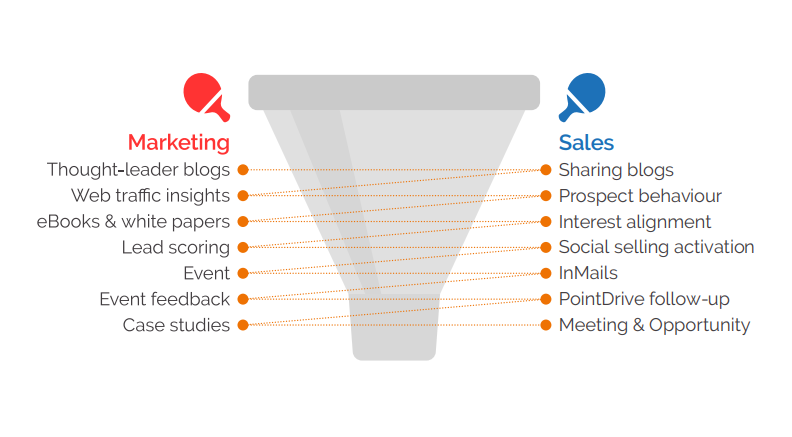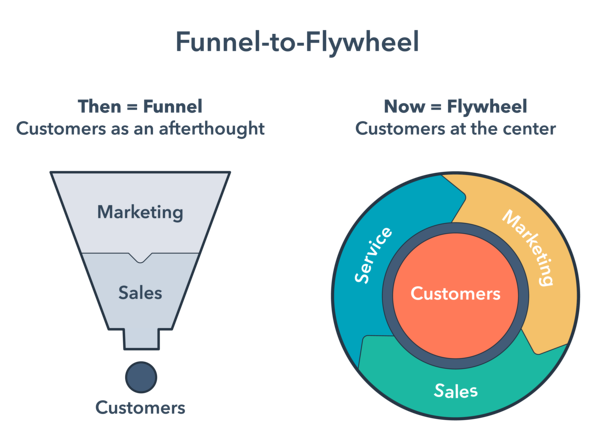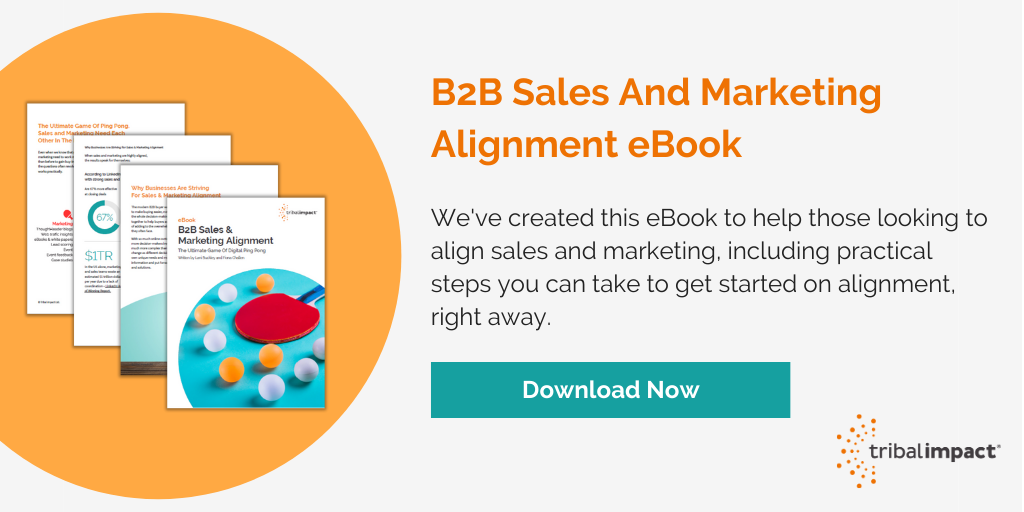A 19% faster revenue growth may await you at the finish line but the benefits of sales and marketing alignment begin here.

Study after study shows the benefits of sales and marketing alignment on ROI. The Demand Gen 2019 B2B Buyers Survey Report found that when teams are aligned, companies see an average of 19% faster revenue growth and 15% profitability. LinkedIn’s research found even more benefits with strongly aligned teams: they’re 67% more effective at closing deals, 58% more effective at retaining customers and drive 208% more revenue as a result of their marketing efforts.
These are just two research examples. And while they present a compelling case for sales and marketing to work more closely together, you may be left wondering exactly how it can bring such ROI advantages.
So below you’ll find the top five benefits you’ll gain when sales and marketing align, which together lead to long-term successful company growth.
1) A Better Understanding Of Your Ideal Customer
In organisations where sales and marketing aren't properly aligned, only 15% of companies collaborate on buyer personas. Contrast this with highly aligned companies, where 58% work together on buyer personas, according to CMI and LinkedIn research: Content Marketing: Unlocking Sales and Marketing Performance, 2018.
Marketing is usually responsible for creating buyer personas and they can gain many insights from website and social media data, research and client interviews. Yet it's sales that have daily conversations with prospects and customers.
Sales know which pain points and goals are most pressing right now to their prospects and clients, what they think of pricing points and which are the quickest to close and most loyal. But marketing can see what content buyers consume, when and by whom. With the right software, they can even see the IP addresses of those with high lead scores, meaning marketing can help identify better-fit target customers.
By combining both teams' insights, you can gain a much better understanding of your ideal customers and create precisely accurate personas.
2) A More Informed, Agile Approach To The Buyer Journey
“The typical buying group for a complex B2B solution involves six to 10 decision makers‚ each armed with four or five pieces of information they’ve gathered independently and must deconflict with the group.” - Gartner: CSO Update 2019: The New B2B buying journey and its implications for sales
We often say that real sales and marketing alignment is like a game of ping pong. The insights go backwards and forwards, allowing them to understand the genuine buyer journey and adapt quickly – leading to more informed and relevant conversations with buyers.
Both teams sit on information that can help build up a better view of the buyer journey. Marketing can see what touchpoints prospects have with the website and other channels such as social media and how this changes and evolves. Meanwhile, sales have conversations in real-time with customers, so they hear their current pains and needs and understand what may be causing friction in the sales process.
By sharing insights these at the outset and on a real-time basis, you can gain a deeper understanding of the buyer journey and ensure that prospects receive content that's directly relevant to the conversation they're having, now.

3) Increase Conversions By Connecting Faster With The Best Prospects
The odds of qualifying a lead in 5 minutes versus 30 minutes drop 21 times.
How quickly sales respond to leads has a significant impact on their ability to convert them. By agreeing on which leads to focus on in order of their perceived opportunity value, sales can turn their attention to higher-quality leads and reduce the lead response time. Meanwhile, marketing can focus their efforts on generating the right leads and nurturing the best prospects.
In highly aligned organisations, both sales and marketing work together to determine which attributes make up their ideal customer profile - the ones most likely to convert, bring in the most revenue and become loyal, evangelical customers. They also have processes in place to mix manual and automatic lead scoring updates according to conversations and further online interactions.
4) Happier Customers = More Customers
70% of respondents said sales and marketing collaboration delivers a better buying experience for the customer.
Keeping customers (and prospects happy) is the biggest driver for success in our digital age, where referrals and word-of-mouth spreads much faster on social networks.
When sales and marketing align, they tend to look at the bigger picture that puts their customers and their success at the heart of a common goal. They adopt Hubspot's "flywheel" approach, with shared KPIs that ensure that all teams align around the customer. Everyone is responsible for applying force to keeping their customers happy and reducing the friction that prevents this.
When this happens, there’s an increase in customer satisfaction and retention, which results in the momentum becoming continuously stronger – building an ever-bigger tribe of loyal and happy customers.

5) Buy-In From The C-Suite
If you're competitor-focused, you have to wait until there is a competitor doing something. Being customer-focused allows you to be more pioneering.
Jeff Bezo, Amazon CEO
Once the C-Suite start to see the ROI from sales and marketing alignment, they'll begin to buy-in to the initiative. That buy-in will cascade down through the organisation as they communicate the benefits of collaboration top-down. They'll also be more willing to invest further resources, such as end-to-end software and communication tools – and even changing bonuses to reflect shared KPIs and success.
With typical B2B sales cycles usually taking between 6 to 9 months, it may take a while to prove the ROI in terms of revenue growth and pipeline. Yet there are plenty of ways to demonstrate the success of your collaboration in the meantime, such as an increase in your sales’ teams LinkedIn Social Selling Index scores, increased conversion rates and improvements in customer satisfaction survey scores.
Just remember to give the C-Suite the headline takeaways and how they tie into threats that they haven't foreseen or opportunities that are hiding undetected.
Strength lies in differences, not similarities, and it's particularly true when it comes to the benefits of sales and marketing alignment. But those differences need to be channelled into a common goal – and that's not just a "finish line" of increased revenue or profits. It involves a shift in mindset to focus on your prospects' and customers' success, and that's when you reap the benefits as a by-product.
And the reality is that there is no "finish line". After every marathon achievement, it's time to get back to working on how you can improve your performance for the next prospect or customer.

